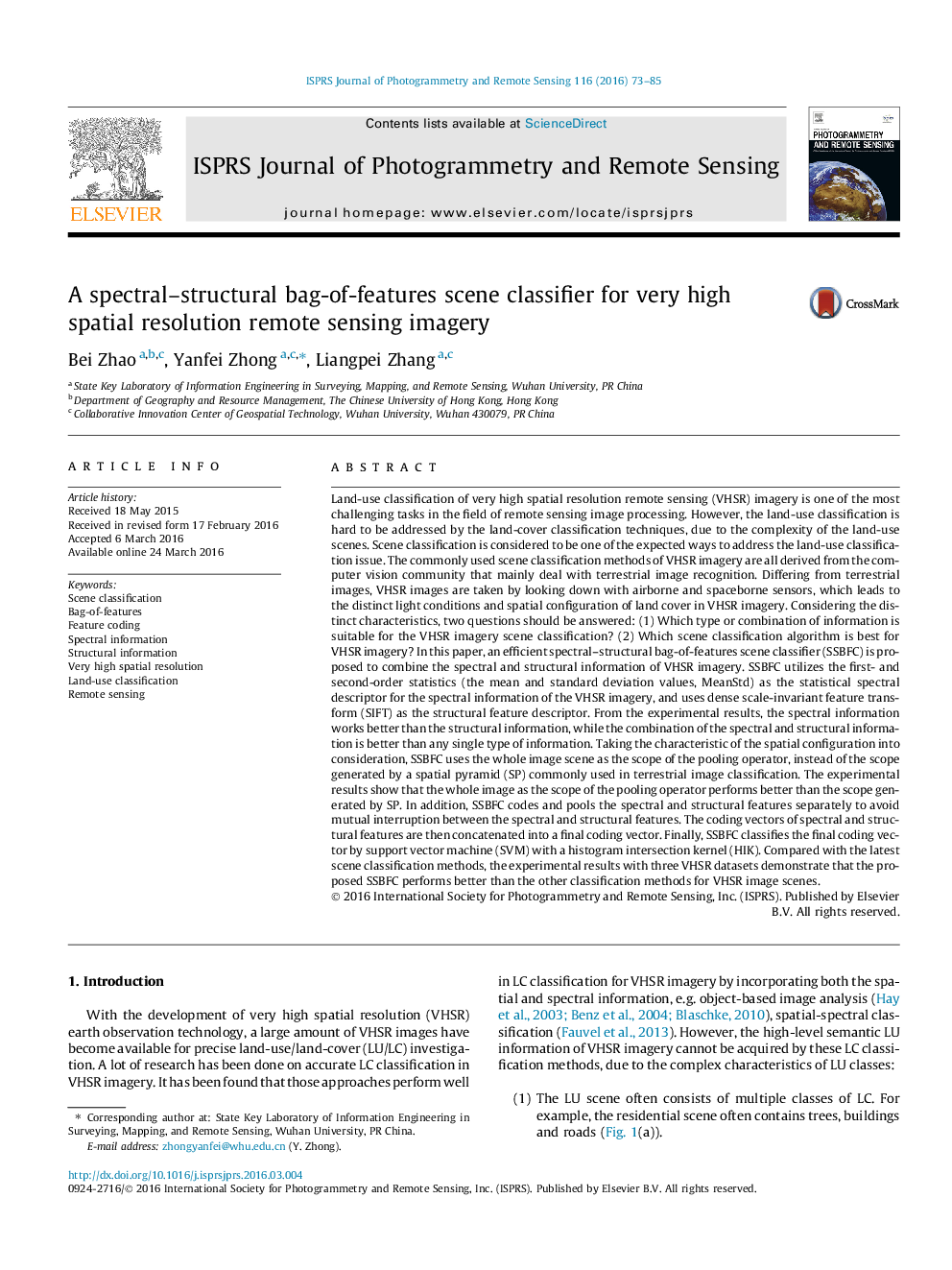| کد مقاله | کد نشریه | سال انتشار | مقاله انگلیسی | نسخه تمام متن |
|---|---|---|---|---|
| 6949325 | 1451258 | 2016 | 13 صفحه PDF | دانلود رایگان |
عنوان انگلیسی مقاله ISI
A spectral-structural bag-of-features scene classifier for very high spatial resolution remote sensing imagery
ترجمه فارسی عنوان
یک طبقهبندی صحنههای کلاسیک-ساختاری طیفی برای تصویربرداری از راه دور سنجش از راه دور بسیار بالا
دانلود مقاله + سفارش ترجمه
دانلود مقاله ISI انگلیسی
رایگان برای ایرانیان
کلمات کلیدی
طبقه بندی صحنه، کیف از ویژگی های، کدگذاری ویژگی، اطلاعات طیفی، اطلاعات ساختاری، قطعنامه فضایی بسیار بالا، طبقه بندی استفاده از زمین، سنجش از دور،
موضوعات مرتبط
مهندسی و علوم پایه
مهندسی کامپیوتر
سیستم های اطلاعاتی
چکیده انگلیسی
Land-use classification of very high spatial resolution remote sensing (VHSR) imagery is one of the most challenging tasks in the field of remote sensing image processing. However, the land-use classification is hard to be addressed by the land-cover classification techniques, due to the complexity of the land-use scenes. Scene classification is considered to be one of the expected ways to address the land-use classification issue. The commonly used scene classification methods of VHSR imagery are all derived from the computer vision community that mainly deal with terrestrial image recognition. Differing from terrestrial images, VHSR images are taken by looking down with airborne and spaceborne sensors, which leads to the distinct light conditions and spatial configuration of land cover in VHSR imagery. Considering the distinct characteristics, two questions should be answered: (1) Which type or combination of information is suitable for the VHSR imagery scene classification? (2) Which scene classification algorithm is best for VHSR imagery? In this paper, an efficient spectral-structural bag-of-features scene classifier (SSBFC) is proposed to combine the spectral and structural information of VHSR imagery. SSBFC utilizes the first- and second-order statistics (the mean and standard deviation values, MeanStd) as the statistical spectral descriptor for the spectral information of the VHSR imagery, and uses dense scale-invariant feature transform (SIFT) as the structural feature descriptor. From the experimental results, the spectral information works better than the structural information, while the combination of the spectral and structural information is better than any single type of information. Taking the characteristic of the spatial configuration into consideration, SSBFC uses the whole image scene as the scope of the pooling operator, instead of the scope generated by a spatial pyramid (SP) commonly used in terrestrial image classification. The experimental results show that the whole image as the scope of the pooling operator performs better than the scope generated by SP. In addition, SSBFC codes and pools the spectral and structural features separately to avoid mutual interruption between the spectral and structural features. The coding vectors of spectral and structural features are then concatenated into a final coding vector. Finally, SSBFC classifies the final coding vector by support vector machine (SVM) with a histogram intersection kernel (HIK). Compared with the latest scene classification methods, the experimental results with three VHSR datasets demonstrate that the proposed SSBFC performs better than the other classification methods for VHSR image scenes.
ناشر
Database: Elsevier - ScienceDirect (ساینس دایرکت)
Journal: ISPRS Journal of Photogrammetry and Remote Sensing - Volume 116, June 2016, Pages 73-85
Journal: ISPRS Journal of Photogrammetry and Remote Sensing - Volume 116, June 2016, Pages 73-85
نویسندگان
Bei Zhao, Yanfei Zhong, Liangpei Zhang,
